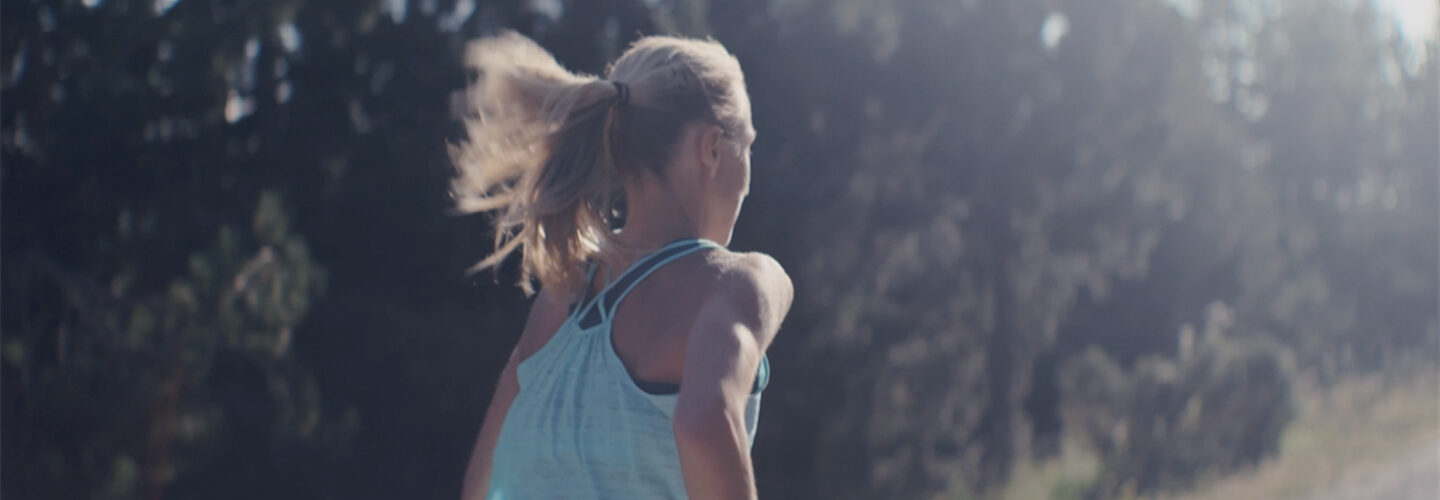
There are things in life which truly mystify me. Things such as the building of suspension bridges, the fact that space is supposedly infinite, or how on earth distance runners can push on through the pain barrier even when every part of their body is screaming for them to stop. Whilst I may never get to the bottom of the first two mysteries, after watching Jack Weatherley’s intimate portrait of long distance runner Paula Radcliffe, I feel I’ve gained some insight into the marriage of physical and mental fortitude which has enabled Radcliffe to reach the record breaking heights of the world’s top athletes. DN caught up with Jack to discover how he and his team used a combination of cinematography, music, sound design, and Radcliffe’s honest, confessional narration to build this enthralling profile of a woman who is one of the world’s best at what she does.
How did the Great North Run Culture commission come to you? Were you directed towards, or did you draw inspiration from any of the previous artistic commissions?
I actually approached them with the idea. I’d met some of the people involved with GNRC while making a film on Mo Farah and they’d pointed me in the direction of the previous commissions, so I was able to pitch directly to them. The inspiration came from the experience of working with Mo. As soon as we started shooting, I became transfixed by what I was seeing in the monitor. The way these elite athletes move is almost hypnotic and I knew from then that I wanted to explore it in more detail. Once the project was greenlit, I worked alongside a producer representing GNRC, so they were heavily involved in bringing the project to life but gave me absolute creative freedom and control over it from start to finish.
What was your process of working with Paula to get her to open up in such an introspective and insightful manner?
Paula’s involvement and enthusiasm for the project was amazing. I’ve worked with a lot of athletes and sports stars but it’s unusual to get such intimate access to them for any significant amount of time. After the treatment had been sent to her and she agreed to be part of the project, we spoke a few times on the phone about what I was hoping to achieve and she really bought into it. The project was more akin to the process of working with an actor, in that we had time to talk things through and exchange thoughts. The film was always designed to be something cerebral and I wanted to hear from Paula in a way that we don’t usually hear athletes talk. They tend to get asked the same boring questions over and over again, so a lot of the language of sport is cliché and platitude. I wanted to get far deeper than that and knew that working with someone as intelligent and succinct as Paula, things would work out well. As with all projects, the most valuable commodity was time. Not only in prep but also during the shoot. I deliberately left her interview until the last part of the shoot, so we’d spent three days getting to know each other better and build more of a rapport.
I wanted the audience to experience her world… The constant motion, speed, distance, texture in both image and sound.
I found Paula’s contemplations on not only the physicality but also the mentality of running very enlightening. Was that counterbalance narrative planned from the beginning?
It was very much planned from the outset. It’s a contrast I find really interesting. Clearly being able to run twenty-six miles in just over two hours is a bonkers feat of physicality(!) but it struck me that the mental challenge in achieving that must be just as acute. It’s that Loneliness of The Long Distance Runner thing… A truly singular activity, where you’re out there on your own, in your head.
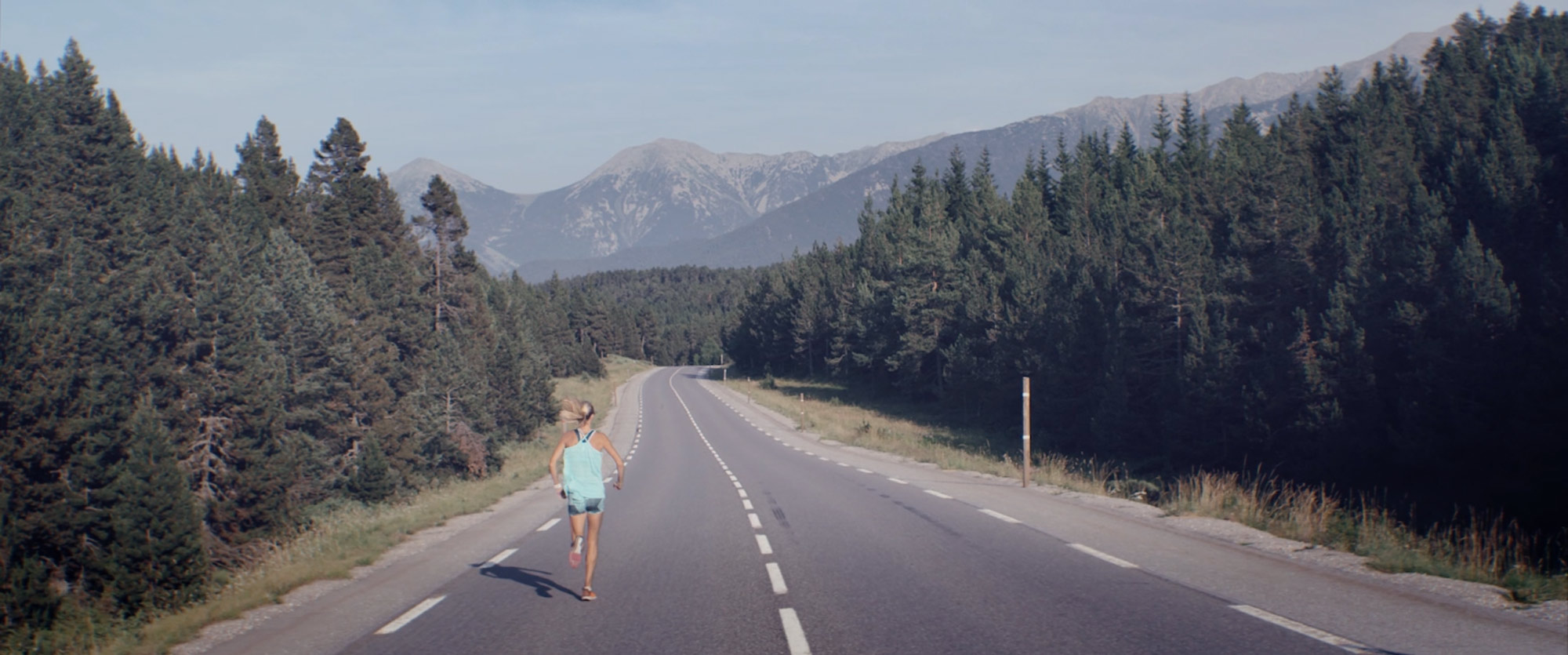
We don’t see Paula in full until a third of the way into the film – was this a tactic to shift the audience to her reflections on running as opposed to the ‘celebrity’ of her image?
Yes it was and it’s great to hear that came across! Again, it all came about from the isolation and solitude of long-distance running. I started to think about how these athletes see the world which then informed the whole shape of the piece. I wanted the audience to experience her world… The constant motion, speed, distance, texture in both image and sound. I’m a big advocate of hearing people without seeing them, I find it really focuses your attention onto them and somehow you hear them more clearly. I wanted people to be drawn into the film slowly and in stages.
When we do see her it’s largely in piecemeal or as a silhouette, in a small portion of the frame. How did you arrive at that almost teasing visual style?
I have to give my good friend (and DOP) Paul O’Callaghan huge credit here. From the outset, I was insistent that the visual language had to be constantly in motion, no static images, no tripods and I wanted really long takes. It needed to reflect the hypnotic, mesmeric movement of the athlete. This was quite a challenge considering some of the terrain we’d be traversing in the Pyrenees. If money was no object, we’d have hired a Russian arm but that would’ve been prohibitive on the budget we were working with. Paul set about working on a rig consisting of a steadicam with a gimbal attached to it, which was then fixed to a regular pick-up truck. Andy Hill, the genius focus puller, was nailing take after take and we established that provided the vehicle was travelling at precisely 13mph (the same speed as Paula), we could point the camera at any part of her and capture beautifully level, rock solid and sharp images no matter the terrain. You usually see athletics on TV in big wide frames to give context in races, whereas we were interested in looking at the finer details, abstractions and mechanics of Paula’s body as she runs… The way she plants and lifts her feet… The way her legs look almost pneumatic… The way she holds her head.
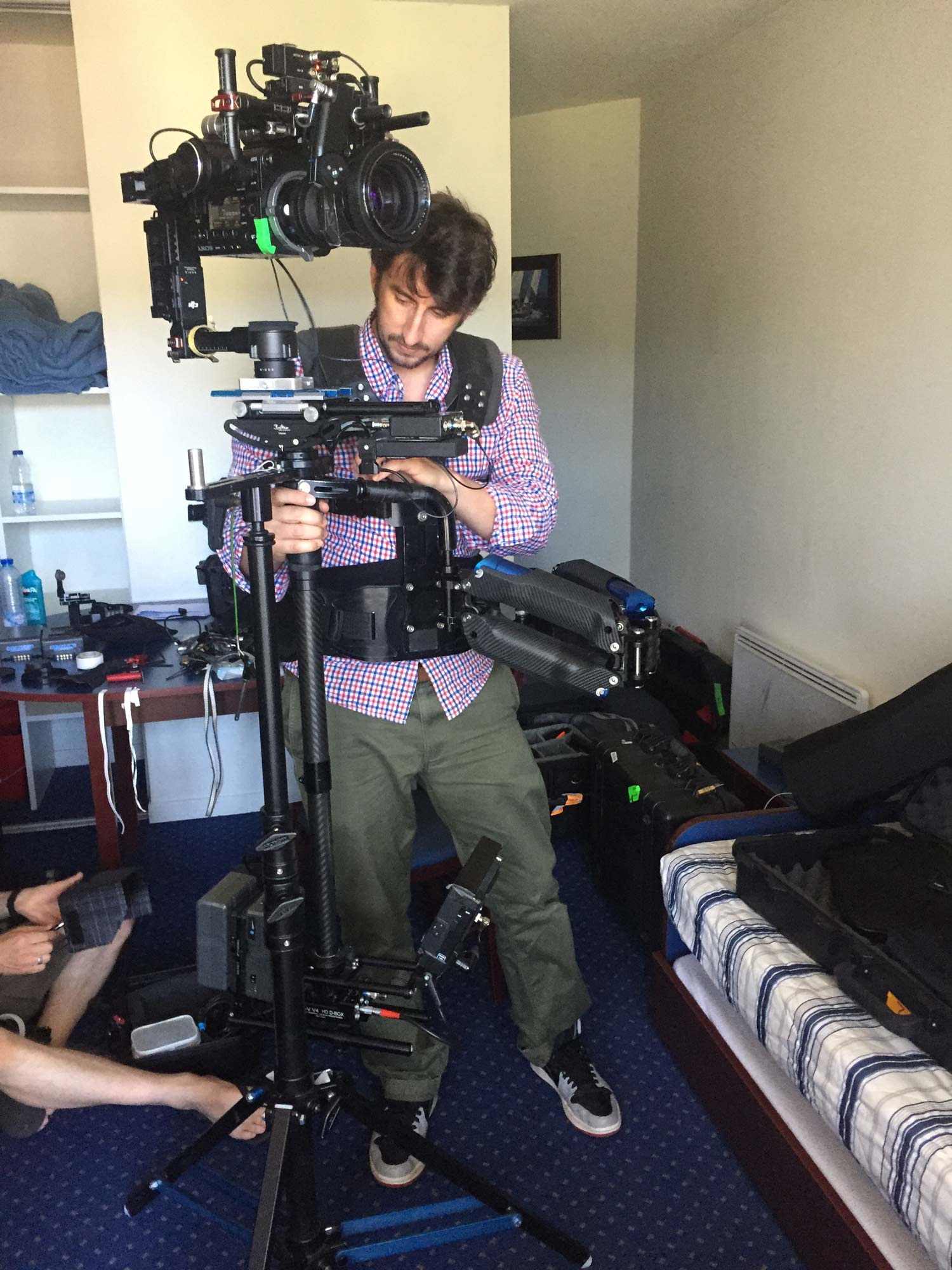
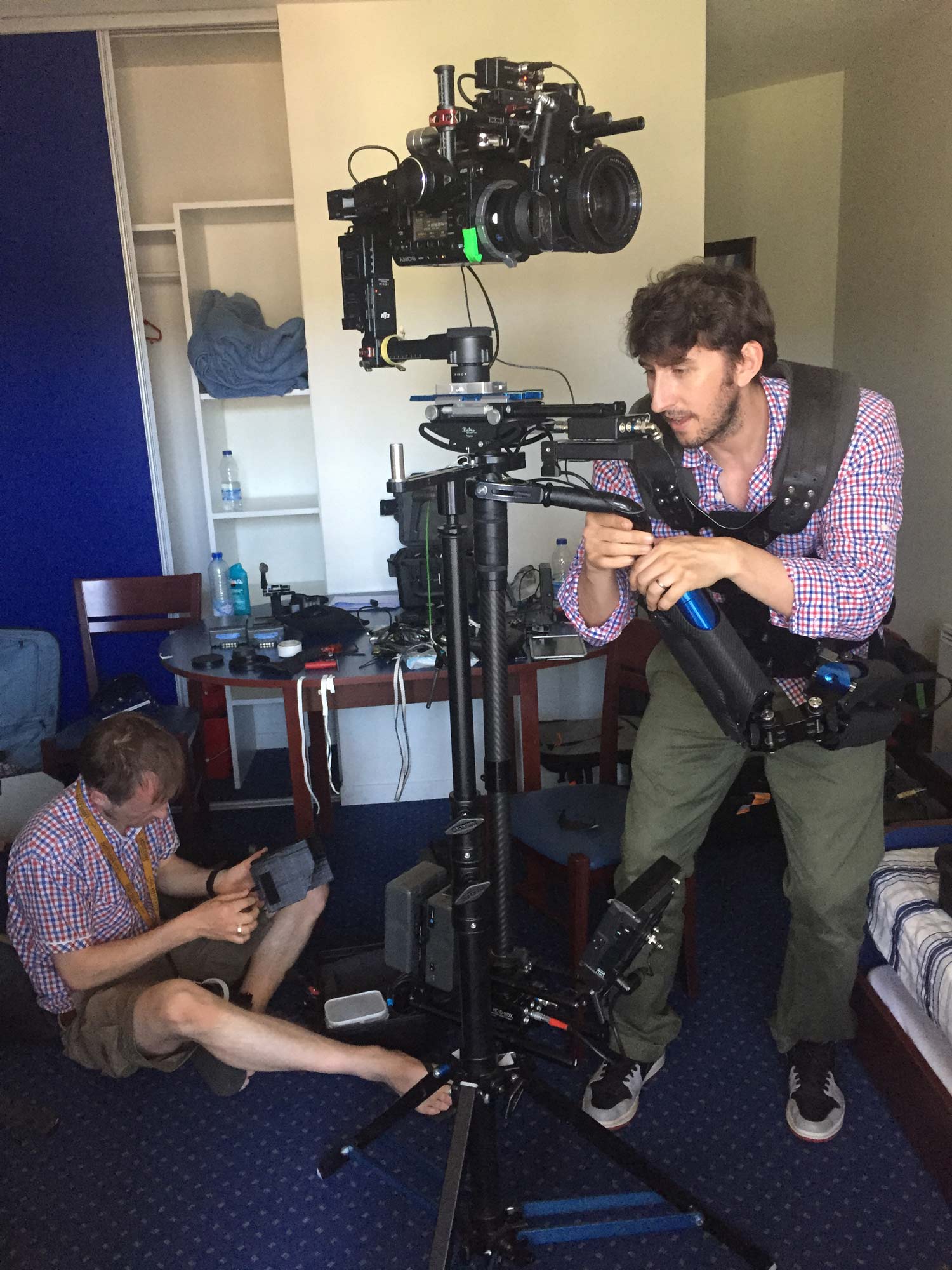
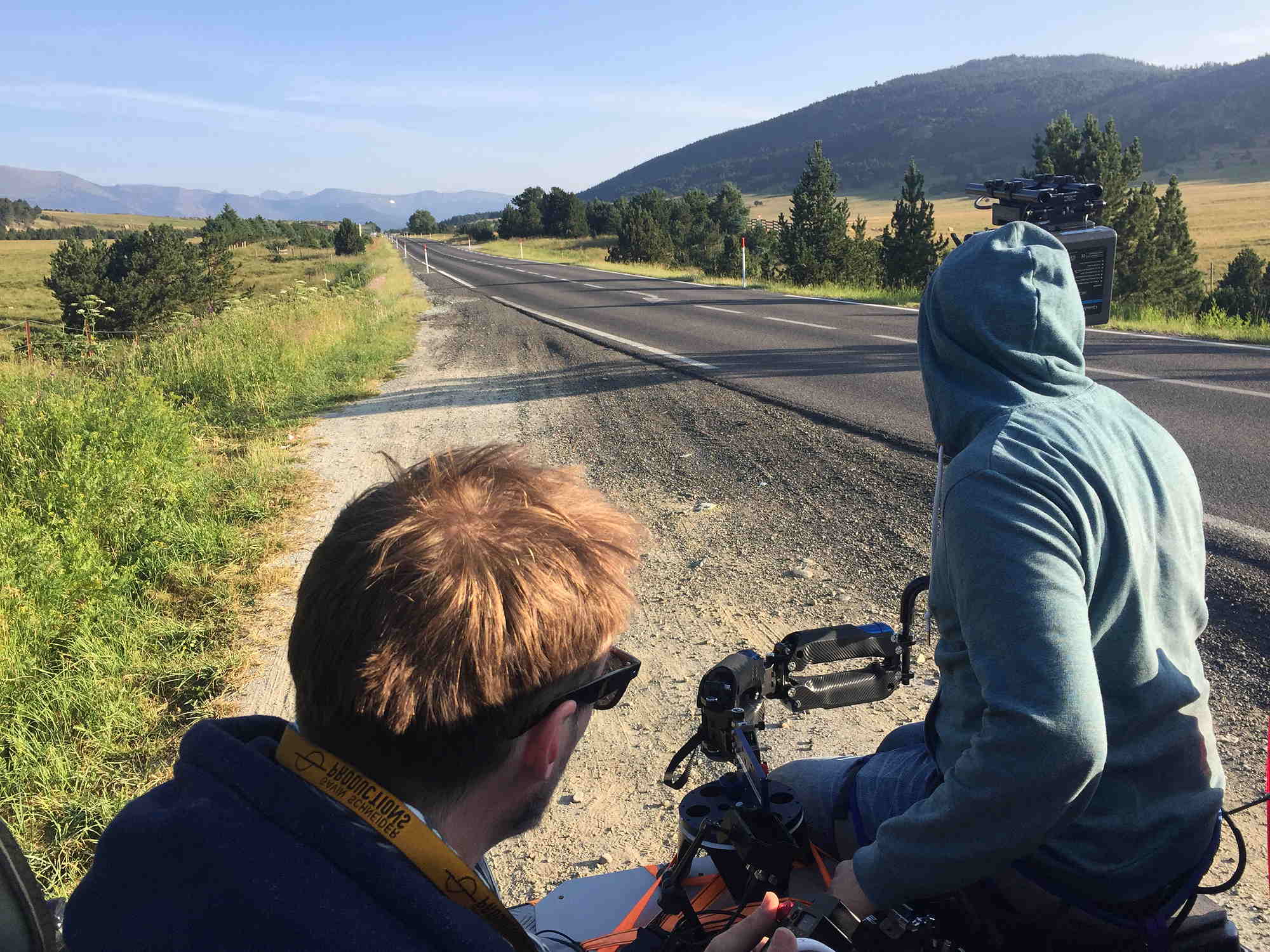
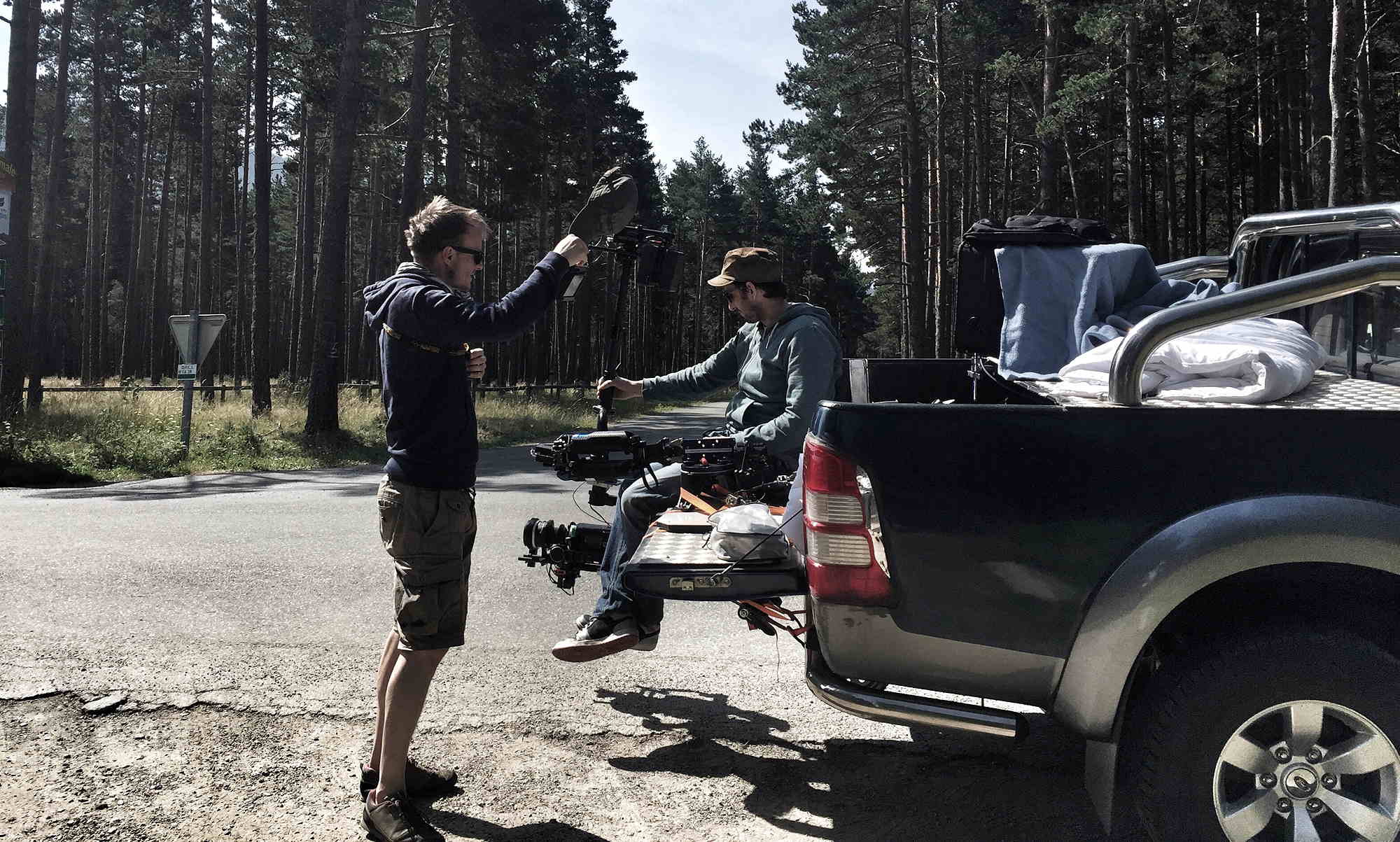
Again you partnered with Toydrum for the film’s score which provides a perfect compliment to the natural sound design. How did you guys achieve that audio soundscape?
It’s a joy working with Pablo Clements and James Griffith (Toydrum). Each time we work together, the stage at which they add their music to the picture, it elevates the work to a whole other level. It’s an over-used expression nowadays but the process really is an organic one. I’ll deliver the picture, we’ll discuss direction and then they start scoring to picture instinctively. They’ll send me some sketches and it goes from there. With this project, the first sketch they sent really moved me and that developed into the finished score. I wanted something that started with an ambient, ethereal quality which then developed and took on more of a sense of character as Paula is introduced. The strings then begin as Paula starts to reflect more specifically which adds such an emotive, intimate quality. As always, they did a beautiful thing with this score and of all the stuff we’ve done together, I think it might be my favourite. I really do think they’re up there with best contemporary film composers. I should also mention Anna Bertmark who did a great, sympathetic job on the sound design, taking us into Paula’s world sonically.
What’s the emotional journey you’d like the audience to experience with the film?
As with all projects, I’d like people to emote to the film the way they want to and it’s been interesting hearing and seeing how people have reacted to it so far. I think there’s some universal themes in there that everyone can relate to one way or the other.
What are you up to next?
Still doing ad work and developing ideas for things here and there. I’ve been working alongside a brilliant writer for the last few months on what I’m hoping will be my feature debut.
To see more of Jack’s work be sure to visit jackweatherley.co.uk or follow his @Jack_Weatherley twitter feed.

